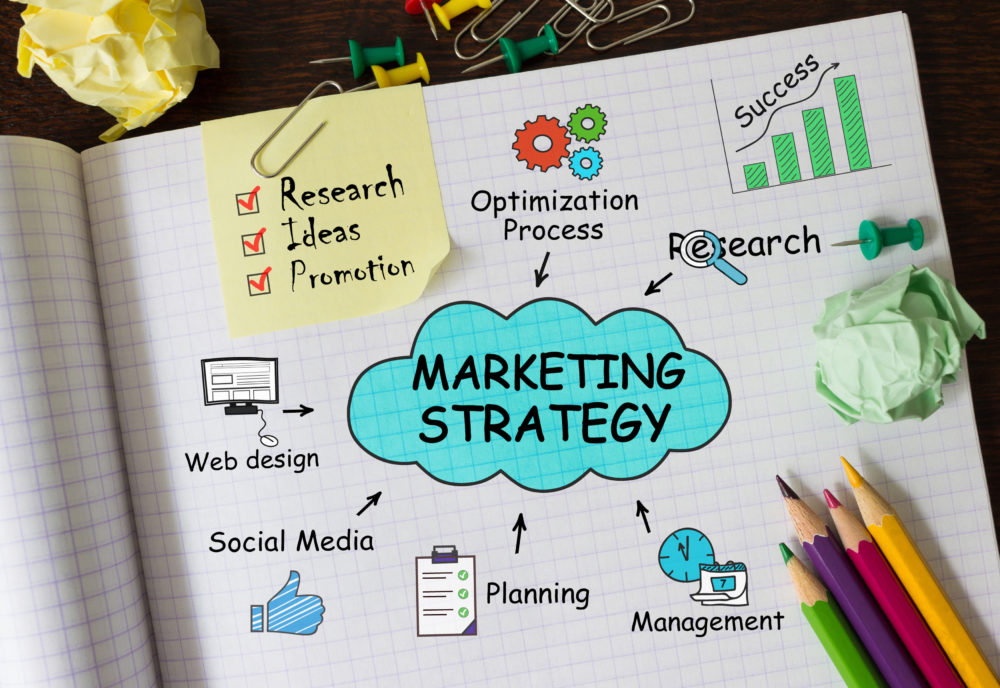The Absolute Beginner’s Guide To Copywriting

The Basics
What’s the big secret that copywriters use to write effective copy?
Here it is: Everybody is in a trance. The number of people who are self-actualized and completely aware is so small that you can discount them when you’re writing sales copy. The people who are going to read your sales copy are caught up in their lives.
You might want to check out the movie, “What the bleep do we know?” It’s the most useful explanation of this phenomenon I’ve ever seen.
People are living inside their heads.
They just drove home from a job they hate to a spouse who doesn’t understand them, or understands them far too well. Their bratty kids are whining about some silly thing. The bills are due and they don’t have the money to pay. Their mind is anywhere but where they are.
Or… They’ve spent the entire day changing diapers, mopping floors, and
watching daytime T.V. Their mind is on the cross-dressing librarian they couldn’t tear themselves away from on the box, their feet hurt, and they’re worried sick about some movie star’s love life.
Or… The limo driver was late, the board meeting was hell, and Warren Buffet just dumped his holdings in their publicly traded corporation, and is advising the world to do the same. The S.E.C. is skeptical about last year’s financials and the little weasel in accounting who threatened to squeal hasn’t been at work in three days.
Your mission, should you accept it, is to know exactly who you’re writing to, and walk a few thousand miles in their shoes. Get inside their mind. Find the pain, and then frame your solution to soothe their pain.
I’ve seen grown men cry as they sat at their desk, visualizing their readers, and their reader’s lives.
That’s the big secret.
Now, let’s look at the nuts and bolts of copywriting.
We’re going to focus on the “big seven” components of a well-written sales page.
1. Headline
2. Bullet-points
3. Subheads
4. The Body
5. The Guarantee
6. The Close
7. The P.S.
Once you master those, you’re ready to start writing copy.
The Headline
90% of your effort should go into writing your headline, because 90% of the effectiveness of your copy depends on it.
Write a lot of headlines. Fifty isn’t too many.
The purpose of the headline is to pull the reader’s mind out of its daily trance, and into your sales copy.
Professional copywriters, who are an educated, savvy bunch, read the
magazines you find at the check-out counter at the grocery store like text-books. “Elvis Marries 2-Headed Space Alien In Shotgun Ceremony!” “World Ending Thursday, 7:13 P.M., According To Secret Prediction!” “Oprah Loses 250 Pounds Eating Ice Cream- You Can, Too!”
That sort of thing.
Why? Because they stop you in your tracks and make you want to know more. Intellectually, you know they’re bull-poop, but people don’t buy with their intellect, they buy with their emotions.
There are an infinite number of ways to approach the writing of headlines, but let’s confine ourselves to five good ones for now.
The Question
Ask a question that can’t immediately be answered with “yes” or “no.”
“Do You Make These Seven Copywriting Mistakes?”
You can’t answer that unless you know what they are. You have to read the first sentence of the copy to find out. You want to know, don’t you? What are those mistakes? Do you make them? What are you going to do about it?
Let’s try another one.
“How Can YOU Fire Your Boss?”
Again, you won’t know if you don’t read the first sentence of the copy.
“What If You Could Double Your Sales In Ten Days?”
You can turn simple sentences into questions-
“You Want Financial Security, Don’t You?”
“She Deserves The Best, Doesn’t She?”
Here’s a special kind of Question headline:
“What Can A 29 Year Old Bottle-Washer From Cleveland, Texas Teach You About The 17 Shameful Secrets Of Shampoo?”
How can you resist?
The Call-Out
This is the easiest headline you can write, and it’s very effective if your product is for a specific niche.
If you’re selling a headache remedy, try “Headache Sufferers!”
If you’re selling guitar strings, try “Guitar Players!”
If you’re selling investments, try “Investors!”
You’ll only get the attention of the very narrow group that you “call out,” but if your product is that tightly focused, that’s all you need.
A Little Psychology
One of the psychological tools I discuss in Influence101 is “Social Proof.” You can get your copy of this audio home-study course at http://www.influence101.com.
Humans are herd animals. If “everybody” is doing something, then “you” must need to do it, too. Everybody else can’t be wrong, can they?
History is full of examples of ‘everybody” being wrong. “Social Proof” is how peer group pressure works.
The fashion industry, the soft drink industry, the religion industry, and the politics industry know this one, and use it all the time. .
We can use this principle to craft effective headlines.
One that has been over-used lately, but is a good example is:
“Who Else Wants To Make $20,000 A Week?”
Another way to use it is:
“Don’t Get Left Behind!”
Or: “20,000 Blind Albino Aviators Can’t Be Wrong!”
Intellectually, you know that they can. Writing sales copy has nothing to do with the intellect. People buy with their emotions and justify it with their intellect.
Imagine That…
Create a picture that draws your reader in.
Like: “Imagine How Much Freedom You’ll Have When You Master
Copywriting!”
“Picture This- Your First Million Dollars!”
The trick here is to paint a vague picture that is enticing, and let the reader fill in the details.
In the headline: “Picture Yourself In The Car Of Your Dreams!” The reader will do exactly that- providing the make, model, year and color for you.
The more detail you provide, the tighter your focus- and the smaller your potential target.
Quotes-
Anything with quotation marks around it will stand out.
“The Best Cigar I Ever Smoked,” Britney Spears.
“All My Men Wear Levi’s,” Elton John
“They Laughed When I Sat Down At The Piano, But When I Began To Play…” This may be the most famous headline in history, by the way. It ran, successfully, for decades.
Steal This Ad
As you start thinking like a copywriter, you’ll start noticing advertisements from a different perspective. Pay special attention to the headlines that get used over and over. Major advertisers are constantly testing headlines- if you notice an ad that runs for several months with the same headline, write that headline down!
It’s working.
Another interesting thing to note about successful copywriters: they steal. Every copywriter worth his salt has something called a “swipe file.” This is where they put copies of ads that they like. When it’s time for them to write a headline, the first thing they do is go to their swipe file and try to find one they can modify to fit their assignment.
Advertising may not be the oldest profession- although, it’s closely related. It has, however, been around a long, long, long time. Occasionally, some genius will come up with a headline that hasn’t been used before, but it’s very rare. Trust me, start snagging great ads and start your own swipe file.
Caveat- don’t steal word-for-word. Use your swipe file for inspiration. As you read the ad, see if you can analyze it to discover why it worked, and use that knowledge to create one that will work the same way.
Another interesting thing about copywriters- they sue. For example, there have been instances where a copywriter has been so impressed by Ted Nicholas’ copy that he used it verbatim. He regretted it almost instantly.
Bullet Points
There are at least three kinds of readers-
1. Those who will read every word you write.
2. Those who skim, focusing on headlines, bullet points, and major points.
3. Those who read the headline and then skip to the offer.
They all read the P.S., by the way.
As you design your copy, you need to keep all three readers in mind. You need to tell your story with your headline, sub-headlines, bullet points, and P.S., for the benefit of the skimmers- and you need to do it in a way that allows your copy to flow smoothly.
Bullet points are used to call attention to benefits.
Do you know the difference between a feature and a benefit? It’s a little tricky, but it’s a distinction you need to learn.
“Fine German engineering allows this car to cruise at 120 m.p.h.” is a feature.
“You can be playing golf while the others are still driving,” is a benefit.
Are you starting to see the difference? The feature is the description. The benefit is what it does for you.
Let’s look at another one.
“This pizza contains broccoli, spinach, and spirulina,” discusses features.
“Healthy pizza for building strong, sexy bodies,” discusses benefits.
Now let’s look for a benefit of the benefit:
“Healthy pizza that will make you so strong that girls will be asking you
out.” The benefit of the benefit “so strong” is “girls will be asking you out.”
Bullet points are only slightly less important than headlines. Almost all of your readers will read them. If you need ten bullet points, write a hundred, and then choose the best ten.
Sub-Heads
Sub-Headlines are like bullet points, but they stand alone, and introduce a new section of copy.
Everything we’ve discussed about headlines and bullet points applies to sub-headlines.
Use them to grab your reader by the shirt-collar and make him or her read the following copy.
Here are some examples of sub-headlines:
“But Wait- There’s More.” Personal note: whenever I hang out with copywriters, I’m silently watching the second hand on my watch. It’s only a matter of time before one of them quotes this sub-headline, and then the others laugh uncontrollably.
“New For 2006!” Would be a way to introduce benefits and features that have been changed for the new product year.
“How can a 165 year old technology revolutionize your sales path?” is a sub-head that was used for our very successful “Think and Grow Rich Automatically” sales page.
“Living a Lifestyle Beyond the Dreams of Avarice” helped us sell a pile of
“The Myth of Passive Income.” (www.mythofpassiveincome.com)
Get the idea? A sub-headline is just like any other headline, except it leads into a specific section of copy. When you’re writing your list of potential headlines, be sure and note the ones that would make good sub-heads.
The Body
This is the meat and potatoes of sales copy.
This is where you identify your customer’s pain, and provide him with the magic secret that will make the pain go away.
You may be wondering, “how long should the copy be?” The answer is, as long as it needs to be. There is a rule of thumb that states that the more expensive the item you’re trying to sell, the longer the copy needs to be.
Don’t be afraid of long copy. Remember your three kinds of readers. A person who is contemplating a purchase, especially the purchase of an expensive item, wants to know all there is to know about the item.
The very first step is to visualize who you’re writing to. What trance are they in as they begin to read?
What did they do all day? Was it fun? What do they want to do? Are they
hungry? Are they thirsty? Are they broke? Are they looking for the perfect
diamond ring?
You’ve used your headline to stop them in their tracks.
You’ve listed a few bullet points to make them curious.
You’ve got their attention with your sub-head.
Now you’ve got to lead them to the bottom of the page and help them press the “buy now” button.
Try to meet them where they are and take them with you. Imagine their objections and address them in your copy.
Avoid using big words when smaller words will do, and adjust your vocabulary to fit your reader. If you’re advertising reverse amortization mortgages in the secondary market, you’re going to use a completely different vocabulary than you will when you’re selling diapers.
One way to pull them into your copy is to tell them a story.
I’ve used this one several times.
“I used to be a broke blues guitar player, living on $30-$50 a night, a few nights a week. I lived in a mobile home, until it got repossessed. I know more ways to cook pinto beans than anybody else in North America, because pinto beans is about all we could afford to buy at the grocery store. “
Hopefully, by this point in the story, I’ve got my reader nodding his head. He’s been broke before. He’s identifying with my story, and putting himself in my place.
He’s ready for some good news:
“Then, one day I met Dr. Joe Vitale at a restaurant in Wimberley, Texas, and he handed me that book. What book? “Spiritual Marketing”.
The secrets contained in that book gave me the knowledge and power to re-frame my life, and create a lifestyle that gives me freedom, happiness, and pleasure. “
If I’ve done my job, my reader is asking “Where can I get that book?”
Your story doesn’t have to be about you. It does have to draw the reader into your sales copy. Use your story as an opportunity to stress the benefits of the product in a personal way.
Another strategy for writing compelling sales copy is to round up your best sub-headlines and put them in a logical order. Then use your copy to expand and explain the benefits mentioned in the sub-head.
Let’s look at some other strategies for leading our customer to the “buy now” button.
One technique I rely on a lot is the “problem-solution” copy.
You might start out by asking a question:
“Do You Have Dandruff?” for example.
Then describe the heartbreak of dandruff. Maybe tell a story about a man who lost his wife, his job, and his self-respect because of dandruff.
That’s the problem.
Then, just before our poor dandruff sufferer hangs himself from a shower-rod, you present the solution.
“Rub this duck oil on your head twice a day, and you won’t have to worry
about losing your wife, your job, or your self-respect.”
I’m exaggerating just a little- they gym where I work out has a t.v., and today I went during the day, when the soap operas were on. Daytime t.v. is pretty educational, if you’re a student of advertising.
I’m not exaggerating very much. For certain audiences, that approach works like a charm.
With appropriate modification, it will work for any audience.
Testimonials
The sales copy can contain testimonials, or you can use them to break up the copy into sections.
Testimonials are essential. Instead of just one person (you), who has a financial interest in the sale, telling them how great the product is, you can gather a crowd to tell them.
The two best kinds of testimonials are from experts and people just like your customer.
There is a trick to getting a testimonial, even from an expert, by the way.
It’s a secret, but I’ll tell you.
“You ask.”
Don’t tell anybody.
Use testimonials to build the case for your product.
The Guarantee
Use your guarantee to shift the risk from the purchaser to you.
You want your customer to feel totally confident when they buy your product. If they feel like they’re going to be stuck with it if they don’t like it, they won’t buy it. This is especially true on the internet, where they can’t touch, or even see the actual product.
Here’s a rule of thumb I learned from a very famous copywriter who was speaking at a seminar- “The longer the guarantee, the lower the return rate.”
Think about it. If you know you’ve got three days to decide if you like something, you’re going to be in a pretty big hurry to find something you don’t like. If you know you’ve got a year, or a lifetime, you don’t feel any urgency. In fact, you may forget about it completely.
I believe in strong guarantees.
I watched Joe Vitale offer a “double your money back” guarantee on a product that sold for almost a thousand dollars. That’s a very gutsy guarantee. It worked. He sold almost half a million dollars worth of product in just a few days- and one of the reasons was that outrageous guarantee.
Clickbank, and most merchant account companies, keep a reserve to pay for refunds. They use an algorithm based on your refund history, the price of the product, and the phase of the moon- I guess. I really don’t know how they do it, but I do know that they keep part of the sales revenue for a long time to make sure there’s money there to pay for refunds.
It’s worth it.
The Close
This is where you ask for the sale.
There’s no point being shy now. Either you’ve built a strong emotional case for your product or you haven’t.
Ask them to click the “buy now” button.
The trend right now in online sales is to hit them high, and then offer a lower price.
Like this:
What would you pay for that kind of freedom? What’s your financial independence worth to you?
You’re probably thinking, “At least a million dollars.”
And you’re right- but because you’re one of my treasured subscribers, I’m offering it for only $497…. But Wait, There’s More!
If you buy today, or anytime before next Tuesday, you can have our guide to financial freedom for only $17- But hurry, this is a limited time offer.
Again, I exaggerated for effect- but all the pieces are there. Establish a high value for your product and then give a believable reason why it’s cheaper in your offer. Create a sense of urgency- and stick to it. If you say that the price is going up on Tuesday, make darn sure you raise the price on Tuesday.
The close is where you mention the bonuses.
Whenever another author asks me if I’ve got anything laying around they can use for a bonus, I always answer “yes,” even if I have to write it specifically for their project. Most marketers and authors are the same way.
Why?
Because we embed links to our web pages and our products in those bonuses. They are an excellent tool for driving traffic to our websites. The more traffic, the more sales for us.
You will have no trouble gathering up as many bonuses as you need.
Let’s say you round up ten e-books as bonuses, and can realistically valuate them at $30 each. That’s $300 in bonuses that you can give away that didn’t cost you a cent.
Those bonuses will make your “close” a whole lot easier to write.
Like this:
Buy “Grow Tomatoes Automatically” for only $17, and get these bonuses, valued at $300, absolutely free!
Remember, people buy with their emotions and justify the purchase with their intellect. What sort of emotional response do you think you’re going to get, when you offer to trade $317 worth of product for $17 in currency?
Bonuses make sales.
The P.S.
After you’ve asked for the sale, you sign the sales copy and go home, right?
Wrong.
One of the most important lines on your sales page is your P.S. Put it right under your signature.
Everybody reads the P.S.
This is where you restate the most important aspect of your sales letter.
Like this:
P.S. There is no risk on your part- our products are guaranteed for your lifetime, and the lifetime of anybody who looks like you. Buy now!
Or:
P.S. Don’t wait- offer ends tomorrow!
Use the P.S. to convince the reader who has passed right by the “buy now’
button to retrace his steps and buy.
Some copywriters will add a P.P.S. and a P.P.P.S.
I don’t know if there is an upper limit to the number of these things that can be used effectively. I try to limit myself to two.








